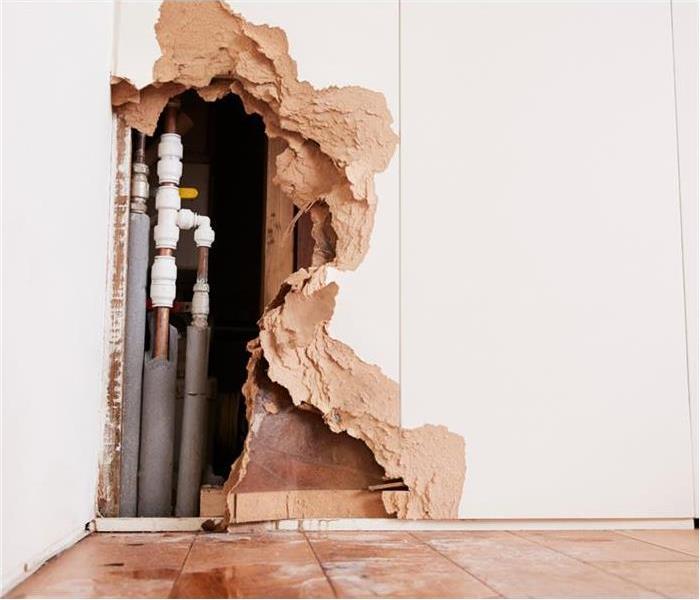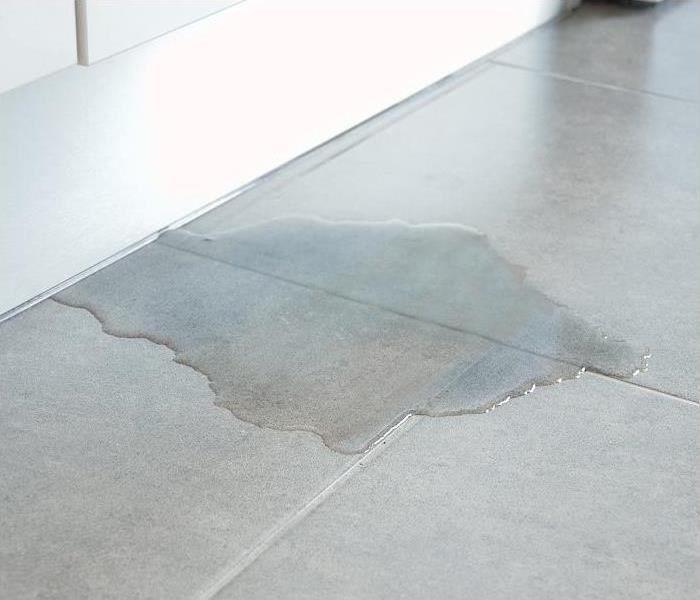Archived Water Damage Blog Posts
How to Prevent Water Damage
1/19/2021 (Permalink)
Although water losses can occur despite our best preparation efforts, there is a lot that home owners can do to try to prevent it as well as lessen the damage.
We have a few tips for if you find yourself in a water damage situation:
• Shut off the water if possible or contact a qualified party to stop the water source.
• Turn off any circuit breakers for the wet areas of the property once access to the power distribution panel is safe from electrical shock.
• Remove as much of the excess water as possible by mopping and blotting.
• Wipe excess water from wood furniture after removing lamps and tabletop items.
• Remove and prop-up wet upholstery cushions for drying.
• Place aluminum foil or wood blocks between furniture legs and wet carpeting.
• Remove any art, technology, important documents, and other materials that are valuable or sensitive to moisture to a safe, dry area.
• Hang draperies with coated hangers to avoid contact with wet carpeting or floors.
• Hang furs and leather goods to dry separately at room temperature.
We also have a few tips for what NOT to do:
• Enter rooms with standing water where electrical shock hazard may exist.
• Enter affected areas if electrical outlets, switches, circuit breakers or electrical equipment are exposed to water. Always avoid electrical shock hazards.
• Leave books, newspapers, magazines or other colored items on wet carpet or floors to cause staining.
• Leave Oriental rugs or other colored rugs on any wet surface- may cause colors to bleed and stain.
• Use your household vacuum cleaner to remove water, possibly causing electrical shock or damage to the vacuum cleaner.
• Use TVs or other appliances while standing on wet carpets or floors, especially not on wet concrete floors.
• Turn on ceiling fixtures if ceiling is wet or enter rooms where ceilings are sagging from retaining water.
If you or someone you know finds themselves in a water loss situation, call SERVPRO of Queen Anne's, Kent & Caroline Counties to help remediate the problem! 443-737-8776
Prevent Water Damage From Appliances | SERVPRO® of Queen Anne’s, Kent & Caroline Counties
1/31/2020 (Permalink)
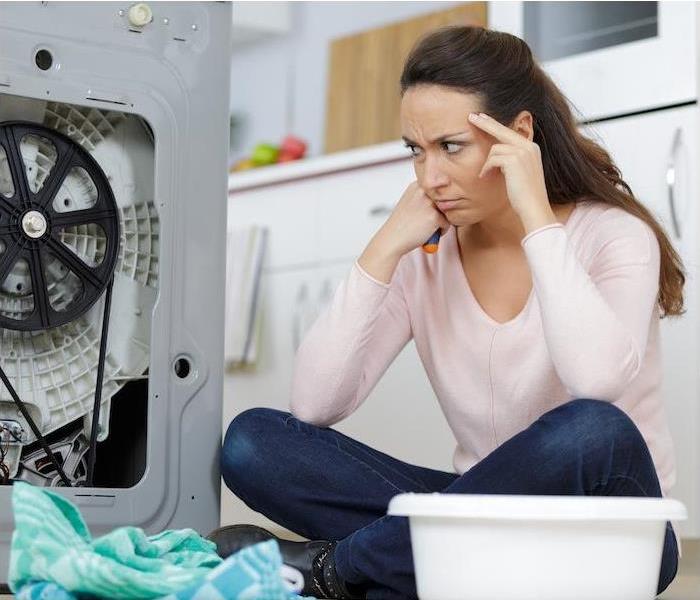 If your home has been impacted by water damage or you’d like to put a plan in place in case it happens to you, contact us to learn how we can help.
If your home has been impacted by water damage or you’d like to put a plan in place in case it happens to you, contact us to learn how we can help.
Regardless of the source of the issues, water damage can be a complicated and costly thing for homeowners to experience.
When that water damage comes from household appliances, however, it can be even more complicated. Because appliances can easily hide water damage, it is important to do regular inspections to avoid the problem worsening without you knowing.
Perform These Regular Appliance Inspections to Prevent Leaks
Hot Water Heater
Hot water heaters are fairly durable appliances overall, but their smaller components can fail early in their life. Hoses and seals are common points for leakage, so checking in often (especially if you notice decreased performance in your unit) is key to preventing damage.
Refrigerator
Refrigerators are so rarely moved away from the wall that they can harbor serious levels of water damage without anyone being aware of it. Their water lines can crack or develop tears, leading to seepage that can become a much larger problem when left untreated. Make inspecting behind the refrigerator a regular part of home maintenance to be safe.
Dishwasher
Just as with refrigerators, dishwashers are rarely moved, so it is good to get in the habit of checking behind them. They can have much larger leaks, which often will not be eligible for insurance coverage depending on the unit. Because of how much water dishwashers use, it is smart to check frequently for leaks to avoid large damages.
Washing Machine
The hoses that connect the washing machine to the water supply should be checked once a month for leaks or any signs of wear and tear, as they are common culprits of leaks. Even if they look perfectly fine, they should be replaced every five years to be safe.
Air Conditioner
An air conditioning unit creating condensation is normal, and generally, this moisture is quickly drained away. However, issues with these drains or water lines can lead to problems within the unit and water damage to the surrounding structures. Following your regular maintenance schedule and checking on your unit regularly during the warm months is the best prevention method for this.
Damages to Homes From Floods | SERVPRO® of Queen Anne’s, Kent and Caroline Counties
12/27/2019 (Permalink)
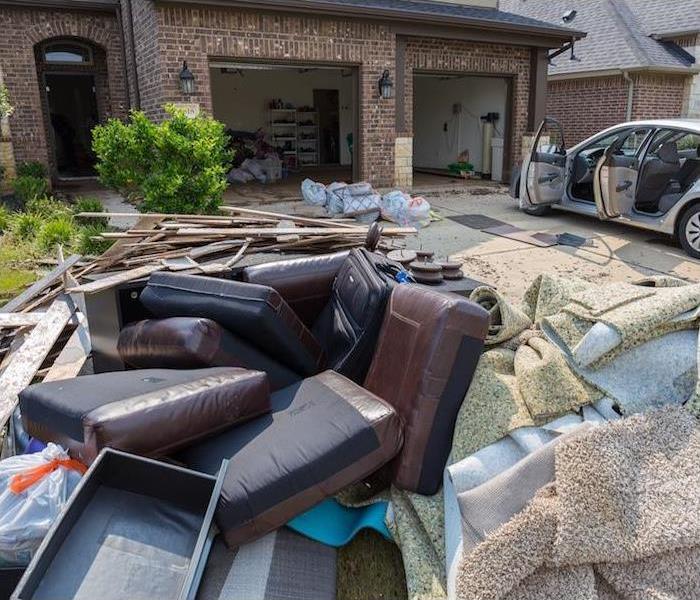 f your home has been affected by a flood, we’ll be here to help you! Give us a call 24/7 to learn about our certified flood restoration process.
f your home has been affected by a flood, we’ll be here to help you! Give us a call 24/7 to learn about our certified flood restoration process.
For many homeowners, planning to stay safe from things like severe weather and house fires might feel like second nature, but it is important to remember the dangers of flooding, too. Once considered a fairly isolated occurrence, the rate of flooding is on the rise, meaning the rate of preparedness should rise to meet it.
Floods are caused by a variety of events and no two are the same, meaning the issues they can cause is also variable. In the spirit of helping homeowners be more prepared, we’ve done the research on the most common types of house damage floods cause.
Most Common Types of Flooding Damage to Homes
Foundational Damage. When the soil underneath a home becomes saturated with floodwater, it can begin to swell and shift below the foundation, causing the home to swell and shift as well. This can lead to uneven flooring, off-kilter door frames and cracks in walls.
Drywall Damage and Mold. Water-damaged drywall and mold go hand-in-hand, so a drywall replacement of any panels that have come into contact with floodwaters is typically in order.
Insulation Saturation. The typical home insulation is made from a highly absorbent material that can hold a large amount of floodwater. Water-damaged insulation will have its effectiveness greatly reduced and can also lead to mold growth within the walls of the home.
Temporary Frame Swelling. The frame of most houses is constructed with solid lumber and can maintain its integrity even when a flood has come into contact with it. While some swelling of the wood may occur, this is normal and will usually subside once a thorough drying is complete.
Appliance Ruining. The insulation in appliances is what helps them work effectively, but it can also make using them to be dangerous after a flood. The good news is that not all appliances are affected the same, so you should get a professional opinion before throwing any out.
Furniture Damage. Damage to furniture following a flood is typically found in mattresses, upholstered pieces and items constructed from composite boards. Furniture made from metal, glass or acrylic will generally be suitable for use again after a thorough cleaning.
How Business Owners Can Prepare for Floods | SERVPRO® of Queen Anne’s, Kent & Caroline Counties
11/8/2019 (Permalink)
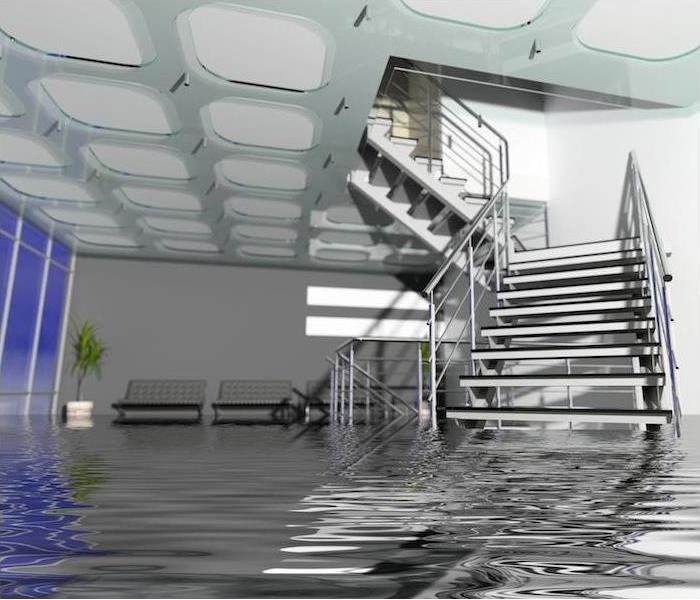 If your business has experienced a flood, we are always here to help.
If your business has experienced a flood, we are always here to help.
While flooding might seem like an isolated incident if your business is not in a floodplain, the frequency at which they can occur might surprise you. Around 90% of natural disasters involve flooding and many of the areas affected are areas that are not traditionally prone to floods at all.
It is important for business owners to take their flood risk seriously. In order to be prepared and get back to business faster, knowing how to plan for a flood is a smart business decision.
How to Prepare
By assessing your risk, planning and educating employees, and protecting your business assets in advance, business owners can ensure a faster reopening after a flood occurs. Some key things to do when preparing are:
- Check the FEMA Flood Mapto understand your risks.
- Secure your supplies and records, and consider keeping copies of them in an offsite location.
- Assemble an Emergency Action Planand ensure all employees are aware of what to do in an emergency.
- Plan an evacuation route for yourself and your employees.
- Check your business insurance policy to determine if you have flood coverage.
- Assemble a workplace emergency kit in case you and your staff must stay put and await help.
- If flooding becomes likely, move valuables and electronics to higher areas.
Documents Business Owners Should Protect
Keeping your business documents from being ruined will be extremely helpful as you rebuild your business and recover from the flood. Some suggested business documents to keep off-site include:
- Your Disaster Recovery and Business Continuity Plan
- The contact information for employees and their emergency contacts
- Insurance policies for the business
- List of any vendors, suppliers or other parties crucial to the business and how to contact them
- Computer backup recovery instructions
- Bank records and information
Call us 24⁄7 to get our team of professionals to your business quickly so you can get back on track.
The Many Hiding Places of Water Damage | SERVPRO® of Queen Anne’s, Kent & Caroline Counties
10/4/2019 (Permalink)
Considering how associated water damage is with severe weather, many are surprised to learn that it is not always the cause. There are many ways water damage can occur throughout a home and it is important to know where it commonly strikes.
Not only is discovering water damage inconvenient, but it can also be expensive. There are many insurance policies that do not accept water damage claims—for those that do, they typically amount to over $6,000. Being aware of the many hiding places of water damage can help homeowners stay aware of vulnerable spots and prevent this headache from occurring.
Where to Look for Potential Water Damage
- Below windows.Windows are joined with the exterior wall and sealed against the weather, but this seal can weaken with time. Watch for watermarks under a window to determine if this is happening.
- Below siding.The joining of siding panels can also give rise to potential leaks. Corners are especially susceptible to this, so check them often for excess water after storms.
- Below door thresholds.The metal plates at the bottom of doors are not sealed for the weather, which means water can seep into the wood below. If the threshold becomes swollen or soft, this is a good indicator.
- Below exterior paint.Layers of paint on exterior surfaces do not always seal well, creating an opportunity for water to seep into the gaps. Discoloration or softness under pressure might be a sign this is happening.
- Below the dishwasher.There are many reasons a dishwasher can begin to leak, and because they are moved so rarely, these leaks can go unnoticed for an excessive amount of time. Check behind the washer regularly for water spots.
- Inside walls with piping.The walls in bathrooms and kitchens are prime territory for leaks as the pipes within them can become worn with time. Discolored paint is the top sign for this.
- Below a toilet.Seals in a toilet can deteriorate as they age, leading to a gradual leak. This leak is often not detected until the toilet becomes wobbly due to a water-damaged floor underneath.
If your home has suffered water damage (even in a hidden place like one of these), we are happy to help! Give us a call right away, and we’ll get there quickly.





 24/7 Emergency Service
24/7 Emergency Service
